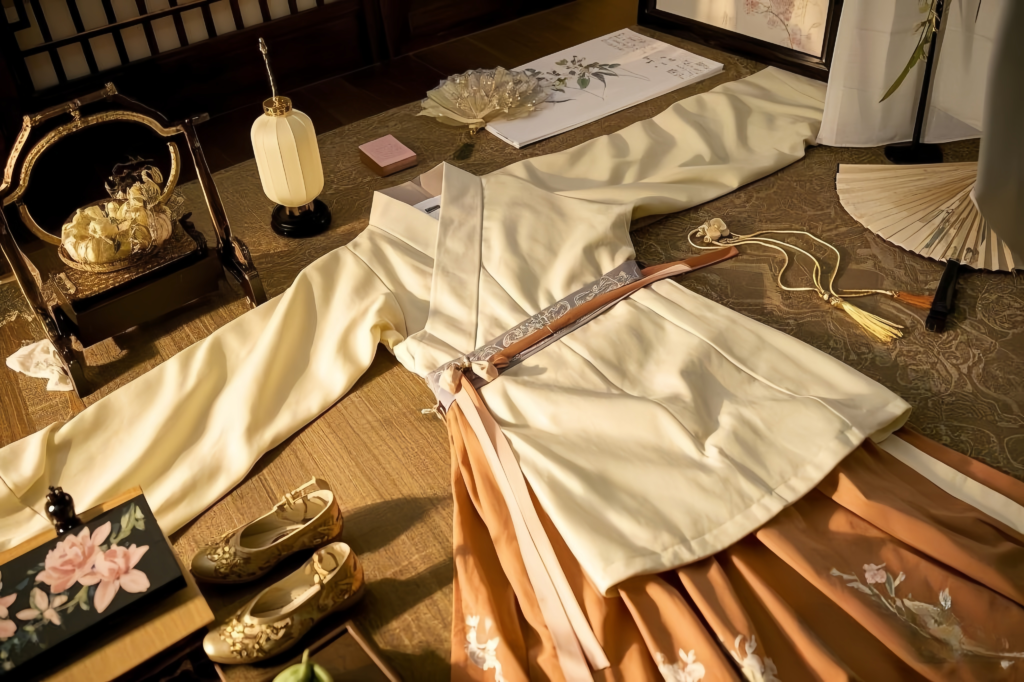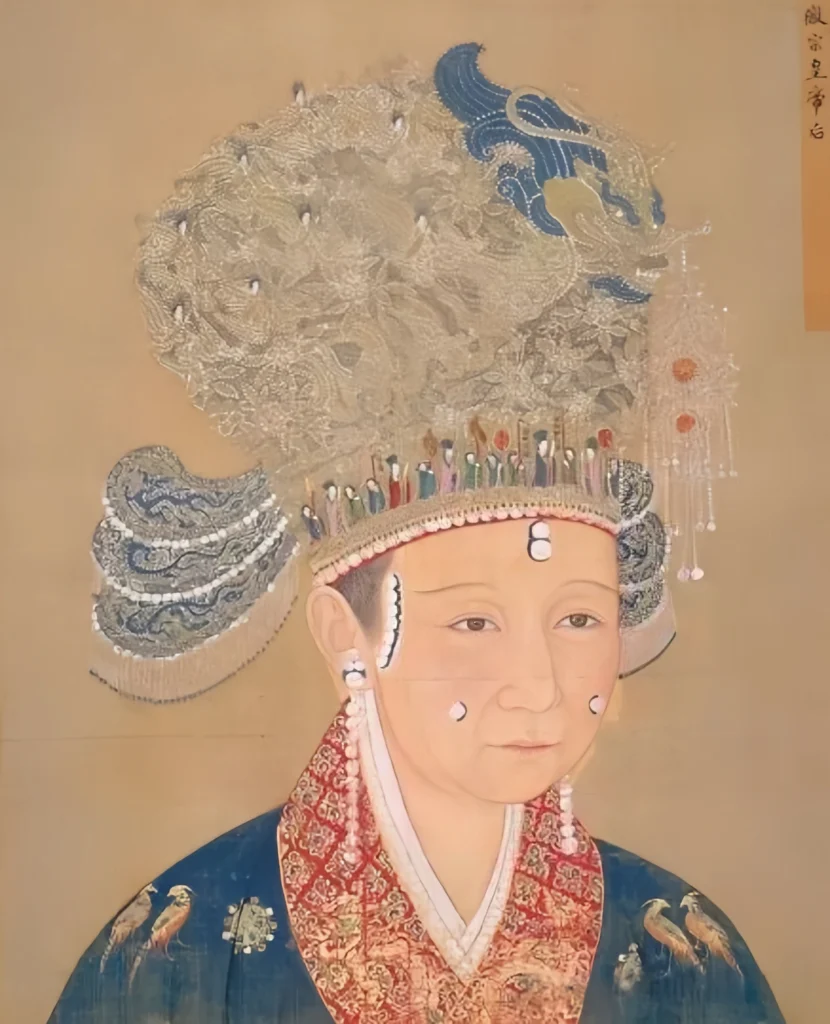The Body of Hanfu

When we talk about the body structure of Hanfu, we’re looking at the main shape and design that defines the garment type. Most Hanfu tops and robes follow a certain pattern that helps determine their “type.” In this section, we’ll walk through some common types of Hanfu tops and their key characteristics. But first, let’s look at some of the common features that nearly all Hanfu body structures share:
General Structure: What’s common in every Hanfu?
First off, you’ll notice that the back of most Hanfu has a seam running down the middle. This seam indicates that the garment is made from two separate pieces of fabric—one for the left side and one for the right—stitched together at the center.
Also, unlike modern clothes, Hanfu doesn’t usually have seams around the shoulders. The front and back parts of the garment are often made from the same piece of fabric, which is simply folded at the shoulder. This gives the clothes a smoother, more elegant look, which is characteristic of traditional Hanfu styles.
Another important point is that while we often divide Hanfu into two main categories—the Hanfu tops (or top) and the long robe—that’s not how Hanfu is traditionally categorized. Instead, Hanfu is classified based on length: long and short versions of various garments. The only difference between these two is how long they are. A short version typically ends around the mid-thigh, while the long version can go all the way down to the knee.
Types of Hanfu Tops: Ru, Shan, Ao, and Pao
Ru (襦)
The “Ru” is often confused with the “Shan” (another type of Hanfu tops we’ll get into later). Over time, the term “Ru” has become synonymous with “top” in Hanfu, especially because Ru tops generally do not come in long versions. Technically, a Ru is only considered as such if it has a “waistband” (腰襴), which is a separate piece of rectangular fabric sewn onto the bottom to extend the length of the top. This design became especially popular in the northwest regions during the Han and Jin dynasties.

Typically, a Ru has a cross-collared (交领), straight-sleeved (直袖), or wide-sleeved (宽袖) design, although other variations are less common. If you see a Hanfu tops with a waistband, you can confidently call it a Ru. However, it’s worth noting that many beginners and some sellers may mistakenly call all tops “Ru” due to a lack of deeper research.

Shan (衫)
The “Shan” can be thought of as a Hanfu tops that is made from a single piece of fabric instead of using separate pieces for the top and bottom. In modern terms, “Shan” is often used to refer to shirts or Hanfu tops, but in the context of traditional Hanfu tops, both short and long versions of tops can be called “Shan.”

The “Shan” can come in a variety of collar and sleeve combinations, and its main feature is that it’s made from one piece of fabric. In fact, starting from the Tang Dynasty, nearly all tops and robes could be classified as “Shan.”

Ao (袄)
You can think of the “Ao” as a “double-layered” version of the “Shan.” It’s made from two layers of fabric: a snug inner layer and an outer layer that is stitched together. Each layer is sewn separately and then joined at the seams. The Ao is most commonly seen in Hanfu tops from the Ming Dynasty for a few reasons: first, the colder climate of the Little Ice Age meant that the Ming dynasty’s garments needed to be warmer, leading to more layered designs; second, certain fabrics popular during this time were woven with gold and silver threads, creating textured surfaces. Since the backs of these fabrics could feel rough against the skin, they needed to be lined.

While you’ll usually see the Ao in Ming Dynasty outfits, technically, any double-layered top without a waistband could be called an Ao.

Pao (袍)
Finally, we come to the “Pao,” which is the long robe we often see in traditional Hanfu. Early versions of the Pao were worn as inner layers but eventually evolved into outerwear. Today, most of the Pao you see being sold or made are outer garments. What makes the Pao different from other robes like the long “Shan” or “Ao” is its length—it usually extends past the knee and can reach all the way down to the ankle.

Unlike the “Shan” or “Ao,” the Pao typically doesn’t have a connection between the top and bottom parts at the waist, although a belt or waist accessory is often used to cinch it in. Popular types of Pao include the round-collared Pao (圆领袍), Daoist robes (道袍), and robes with straight or curved hems (直裾 and 曲裾). These robes have been worn by various dynasties since the Tang Dynasty.

In this section, we’ve covered the basic types of Hanfu tops, exploring their common structures and key features. Each type of garment, whether it’s the Ru, Shan, Ao, or other traditional Hanfu body structure variations, has its own distinct design that reflects the era and functionality it was made for. These designs are not only functional but also aesthetically pleasing, showcasing the elegance of traditional Hanfu tops.
While these Hanfu body structure types may vary in terms of fabric choice, length, and layering techniques, they all share a common thread: they are recognizable as traditional Hanfu due to their consistent patterns and design principles. From the simple Shan to the more complex Ao, every piece has its own unique style, yet all retain the core features that make them quintessentially Hanfu.
By understanding the subtle differences and details in each of these Hanfu tops, you gain a deeper appreciation of the rich history, cultural significance, and craftsmanship behind each piece. Whether you are a beginner or an enthusiast, knowing these differences can enhance your appreciation of Hanfu clothing as a whole, allowing you to admire not just the garment, but the history woven into every stitch.
Explore more about Hanfu clothing by checking out our article on traditional Hanfu designs and fabrics.





Responses